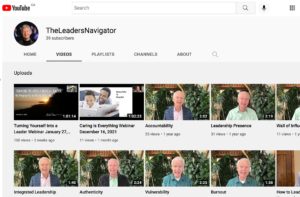Achieving Engagement From Productivity
I’m concerned about the focus these days on employee engagement as if it were some kind of “special thing” to be pursued outside the usual day-to-day operations of a workplace. Engagement isn’t a goal to be sought. Rather, it’s an outcome of good leadership. The goal should be a well-run organization. The best run organizations have engaged employees, not because they are necessarily pursuing “an engaged workforce,” but because they are committed to a well-run organization. If you keep your eyes on the right priorities – on the right prize – engagement will naturally follow.
An adaptation of Gallup’s Q12 Index (https://q12.gallup.com/) provides a suggested checklist for leaders. If you sincerely pursue these endeavors toward a well-run organization, employee engagement will follow. In other words, these behaviors can assist the leader to do a much better job.
Don’t try to accomplish this massive list all at once. Start with getting a read on how your employees might perceive your leadership and begin to take action in any of these areas. Action on any one item on the checklist below will result in a better, well-run, engaged organization.
- Are you doing everything you can to clarify the kind of employee you need on your team? Are you clearly assessing the kind of skills and attitude required of an employee before you hire them, so that in the hiring process you get the right kind of people on the bus? While you may refine behaviors, don’t count on changing people’s fundamental values.
- Are you explaining to your people exactly what you expect from them, both in terms of operational results and the kind of behaviors you need to see demonstrated to support your values?
- Are you doing everything you can to give them the skills, tools, resources, and capabilities to succeed at their job?
- Have you linked your expectations with the purpose of your organization so they feel their contribution is valued?
- Have you assessed their strengths so they are doing what they do best every day?
- Are you getting out of your office at least every week and catching them doing their job well? Are you recognizing and celebrating success?
- Do you genuinely care about them as people? Have you listened to what matters to them, what they value, and how you can best support them to use their job to achieve their personal goals?
- Are you encouraging your employees to grow, learn, and develop themselves? When was the last time you recommended a good book for them to read?
- Do you allow genuine input and collaboration from your team so their opinions actually matter? While you can’t possibly make every decision by consensus, do you explain – and demonstrate – that their input on as many decisions as possible will be taken seriously?
- Do you set high standards and hold people to account to those standards? “Everyone knows who is and who is not performing, and they are looking to you, as the boss, to see what you are going to do about it.” (Collin Powell)
- Are you encouraging the development of good friendships at work?
- Are you openly talking with people about their progress toward the achievement of both personal and organizational goals – so there are no surprises if/when you do an annual review?
- Are you bringing humility to your leadership by being honest, vulnerable, and teachable?
- Are you making it safe for people to risk making mistakes, while ensuring that they learn from these mistakes?
- Are you creating a culture of ownership, so that employees are encouraged, and held accountable to create conditions for success on their own rather than depending solely on you, the boss, to deliver this?
Moving into a position of leadership does not give you more power. What it gives you is more accountability. Leading a well-run organization takes time, patience, and a clear intention. Set a goal for a productive workplace and employee engagement will follow.


